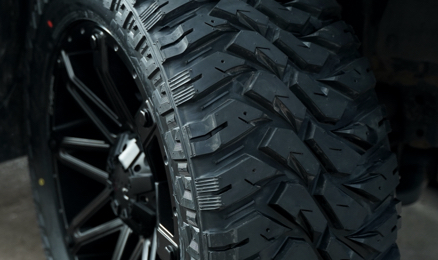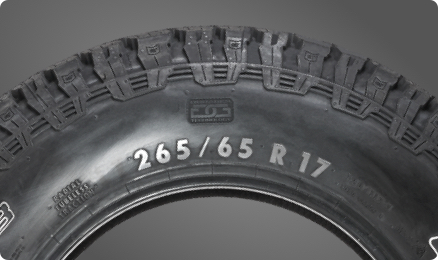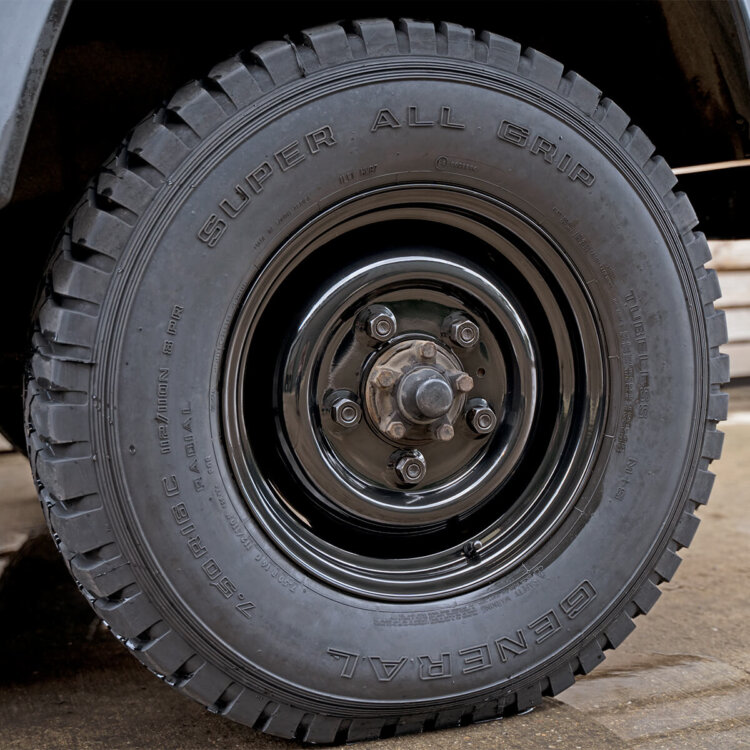How to find tyre size
Expert advice on how to find tyre size from the Pro Team at 4x4 Tyres
How to find tyre size for your vehicle is crucial for ensuring optimal performance, safety, and driving experience. The size of a tyre is represented by a series of numbers and letters that indicate the width, height, aspect ratio, construction, and rim diameter of the tyre. Here’s what each of those numbers and letters means:
• Tyre Width: The first three digits in a tyre size code represent the width of the tyre in millimetres. For example, if the code reads 205/55R16, the tyre width is 205mm.
• Aspect Ratio: The next two digits following the tyre width represent the aspect ratio or profile height of the tyre. It is the ratio of the height of the tyre sidewall to the tyre width. For example, if the code reads 205/55R16, the aspect ratio is 55, which means the height of the sidewall is 55% of the tyre width.
• Construction: The next letter in the code indicates the construction of the tyre, which can be either “R” for radial or “D” for diagonal. Most tyres today are radial and have an “R” in the code.
• Rim Diameter: The last two digits in the code represent the rim diameter in inches. For example, if the code reads 205/55R16, the rim diameter is 16 inches.
How to find the size of tyres on cars: It is important to note that the tyre size specifications for a particular vehicle depend on the make, model, and year of the vehicle. It is recommended to refer to the vehicle owner’s manual or consult a tyre professional to ensure that the tyres selected meet the manufacturer’s specifications.
In addition to the size, it is also important to consider other factors such as load-carrying capacity, speed rating, and tread pattern when selecting tyres for your vehicle. These factors determine the performance and safety characteristics of the tyre and can impact the overall driving experience.
How to find tyre size
Have a look at the sidewall of your current tyres – you’re looking for a set of numbers that looks like this: 265/65R17 120S. The first part of this code (265/65R17) is the size of the tyre, and the last part (120S) is the load rating and the speed rating.

What tyre sizes actually mean
Let’s break down our example tyre size 265/65R17.
The first three numbers: this one’s simple – it’s the width of the tyre in millimetres. So our example tyre is 265mm wide.
The second two numbers: this one’s more complicated – it’s the height of the tyre sidewall as a percentage of the width. So in our example the tyre sidewall height is 65% of the width, meaning it is 172mm high. So in this example, there is a greater distance from the rim of the wheel to the rim of the tyre itself. Low-profile tyres have a much smaller sidewall number.
The R: this simply means that the tyre is of Radial construction, like all modern tyres are. There are very few exceptions to this. Often we don’t show the R on our product pages as it’s a given.
The last two digits: another easy one – this is the diameter of the wheel rim in inches. In our example the vehicle is using 17 inch wheels.

Why tyre load ratings are important and how to find yours
The tyre load rating is shown next to the tyre size. You’ll see two or three numbers and one letter (such as 120S). The load rating is the number part. On its own, this number doesn’t mean very much, but figuring out the load rating for your vehicle is really important, especially if you’re using a commercial vehicle. If you use a tyre with a load rating that’s not high enough for your vehicle, you could void your insurance. If in doubt, just check with our experts. Load rating is so important because it helps determine the actual carrying capacity of your vehicle. Remember, a pickup with a factory load-rating of 1252lg like the Ford Ranger will factor in the rating of the original tyres.
The load rating (in our example it’s 120) is actually just a code that relates to the maximum load of each tyre. You need to use the table below to convert the load rating into real-world figures (in our example it relates to 1400kg max load per tyre):
| Load index no. | Max tyre load (kg) | Load index no. | Max tyre load (kg) |
|---|---|---|---|
| 62 | 265 | 95 | 690 |
| 63 | 272 | 96 | 710 |
| 64 | 280 | 97 | 730 |
| 65 | 290 | 98 | 750 |
| 66 | 300 | 99 | 775 |
| 67 | 307 | 100 | 800 |
| 68 | 315 | 101 | 825 |
| 69 | 325 | 102 | 850 |
| 70 | 335 | 103 | 875 |
| 71 | 345 | 104 | 900 |
| 72 | 355 | 105 | 925 |
| 73 | 365 | 106 | 950 |
| 74 | 375 | 107 | 975 |
| 75 | 387 | 108 | 1000 |
| 76 | 400 | 109 | 1030 |
| 77 | 412 | 110 | 1060 |
| 78 | 425 | 111 | 1090 |
| 79 | 437 | 112 | 1120 |
| 80 | 450 | 113 | 1150 |
| 81 | 462 | 114 | 1180 |
| 82 | 475 | 115 | 1215 |
| 83 | 487 | 116 | 11250 |
| 84 | 500 | 117 | 1285 |
| 85 | 515 | 118 | 1320 |
| 86 | 530 | 119 | 1360 |
| 87 | 545 | 120 | 1400 |
| 88 | 560 | 121 | 1450 |
| 89 | 580 | 122 | 1500 |
| 90 | 600 | 123 | 1550 |
| 91 | 615 | 124 | 1600 |
| 92 | 630 | 125 | 1650 |
| 93 | 650 | 126 | 1700 |
| 94 | 670 |
Why tyre speed ratings are important and how to find yours
Speed ratings are similar to load ratings – you need to make sure you’re on the right side of the law and your insurance company. The speed rating part of the tyre size is the letter at the end, next to the load rating number. In our example this is an S, which means that tyre is rated to 112mph.
OK, if you’re driving a stock Series 3 you’re not going to need to worry too much about a very high speed rating for your tyre. But if you’ve got a Cayenne or a modern Range Rover then of course it’s much more critical. Using a tyre that’s not rated highly enough for your vehicle could void your insurance and put you in danger at high speed, so it’s best to get it right. You’ll notice that we mark speed ratings on all of the products we sell.
| Speed rating | Max speed (mph) |
|---|---|
| N | 87 |
| P | 93 |
| Q | 99 |
| R | 106 |
| S | 112 |
| T | 118 |
| U | 124 |
| H | 130 |
| V | 149 |
| Z | 150 |
| W | 168 |
| Y | 186 |
Exceptions to the rules
There are a couple of exceptions to these sizing rules.
- Classic Land Rover tyres in imperial sizing: these are simply listed as 6.00/16 or 7.50/16. The 16 is the rim diameter as above, and the 6.00 or 7.50 refers to the width of the tyre in inches.
- Large off road tyres: very big tyres for serious off-roading are often shown in inch sizing, such as 40/13.5R17. The 40 means the tyre has a diameter of 40 inches – this is the height of the whole tyre. The 13.5 means 13.5 inches wide (yes we said they were big). And the 17 is the diameter of the wheel rim.

Secure shopping
We understand at 4×4 Tyres that your security when shopping online is paramount. We subsequently go to extreme lengths to ensure that you and your data are safe by using market leading SSL Encryption.
Discover Your Tire Size by Registration
Or you can easily determine the suitable tyre sizes for your vehicle with our convenient vehicle registration lookup tool. This tool will provide you with a list of potential tyre sizes that could match your vehicle; however, it’s essential to verify and select the correct size. To begin, enter your vehicle registration below.
If you’re still looking for help and advice about how to find tyre size, just get in touch with our expert team by email, chat or phone and we’ll be glad to help. get in touch with our pro team for expert advice.